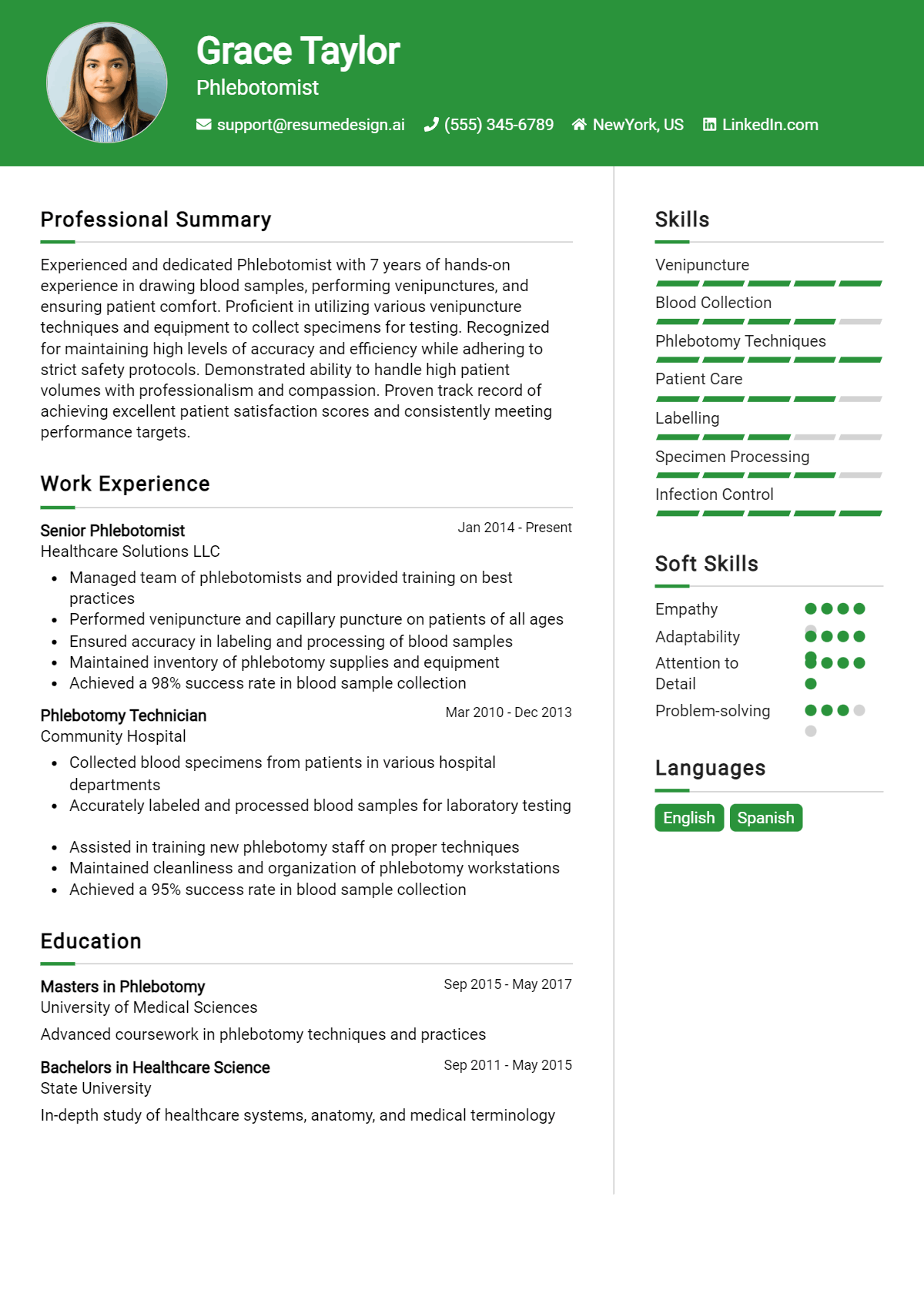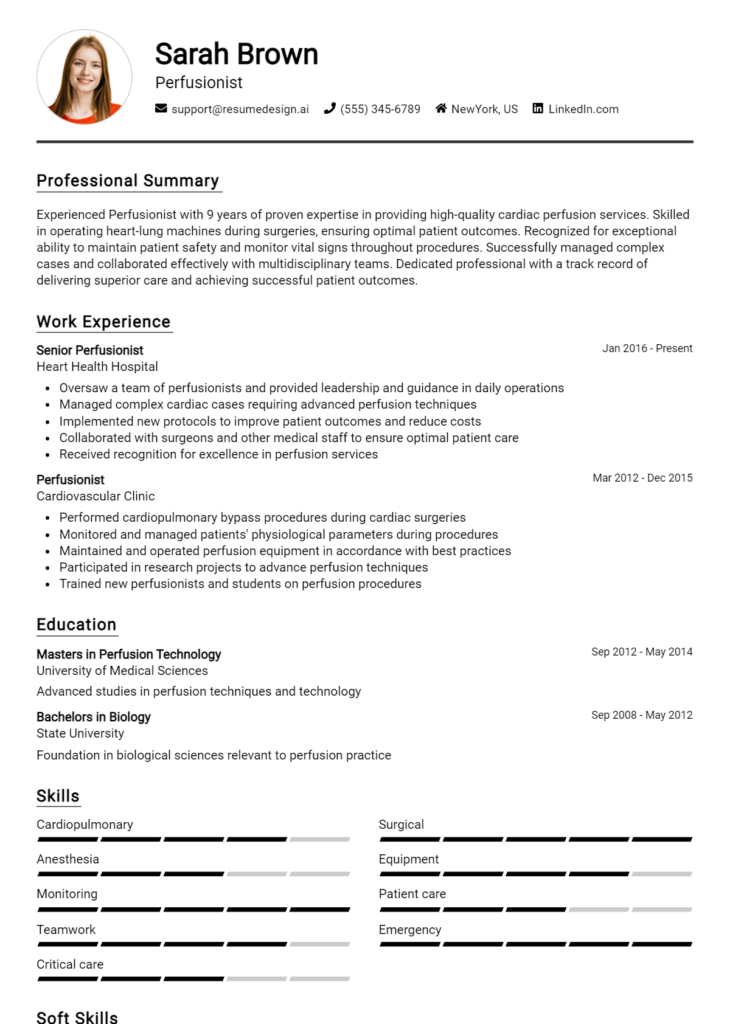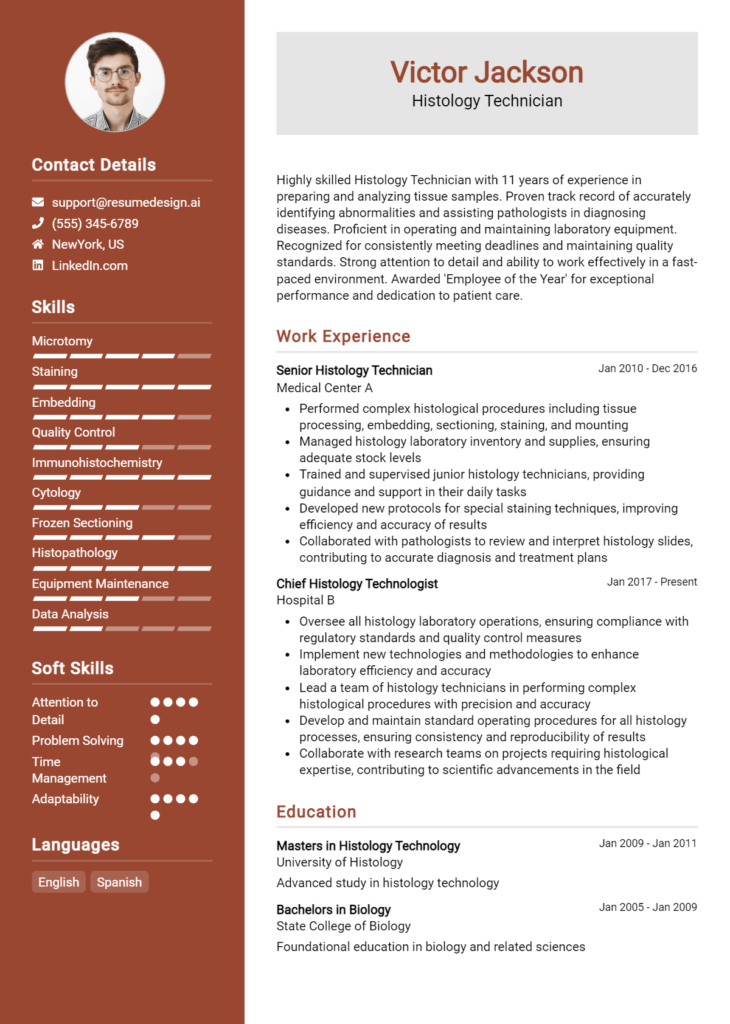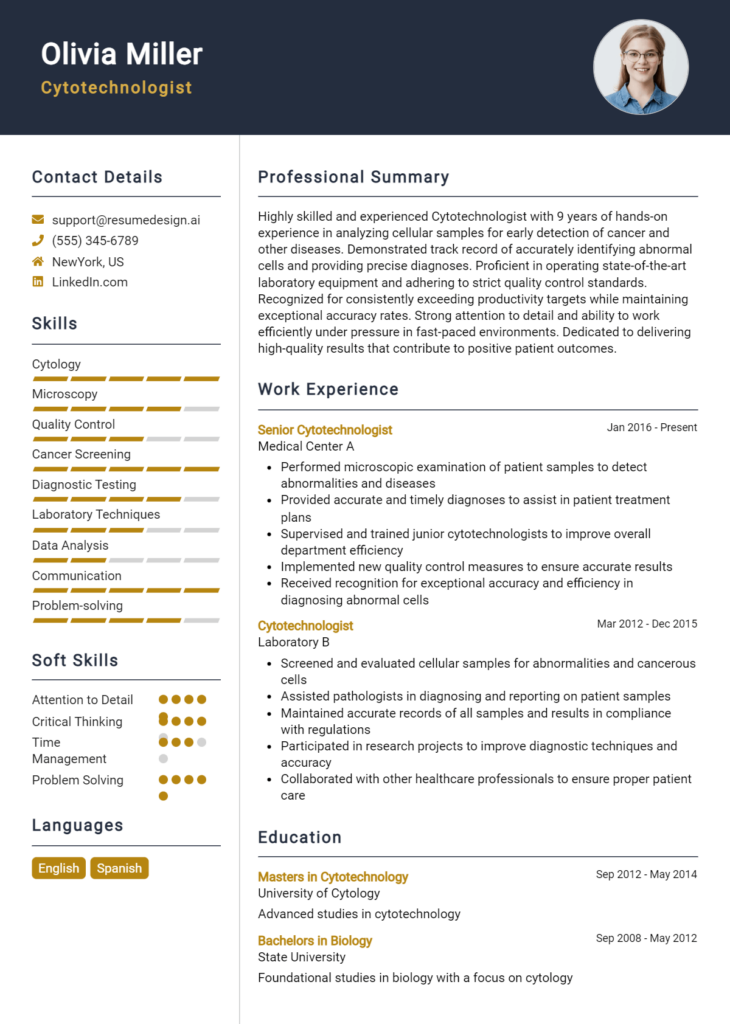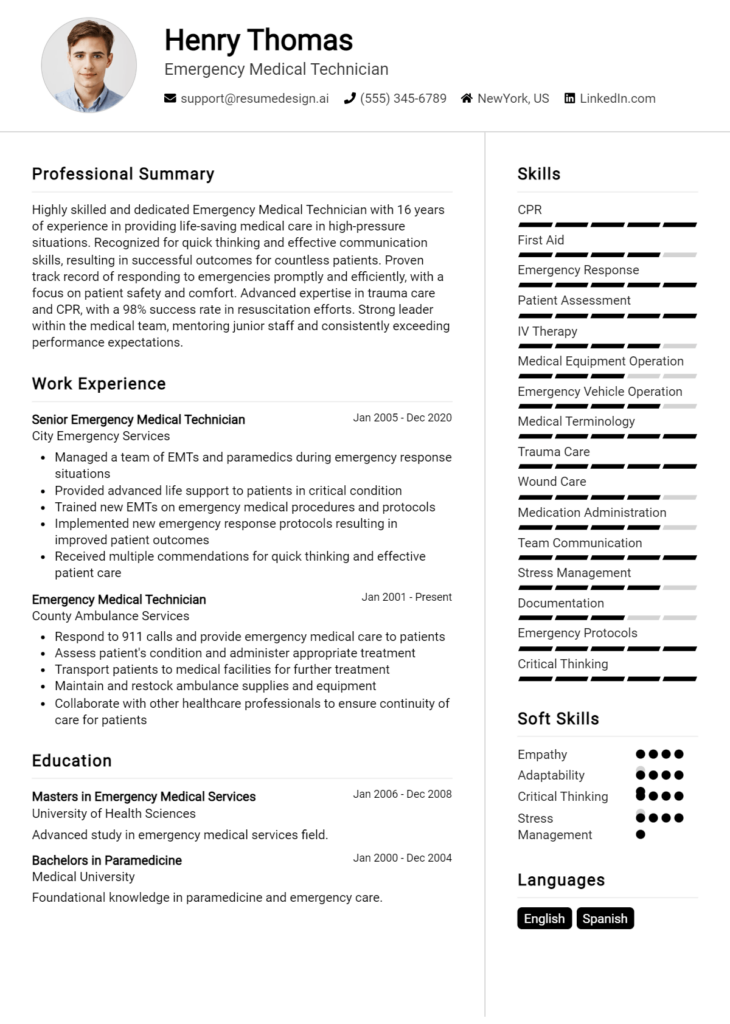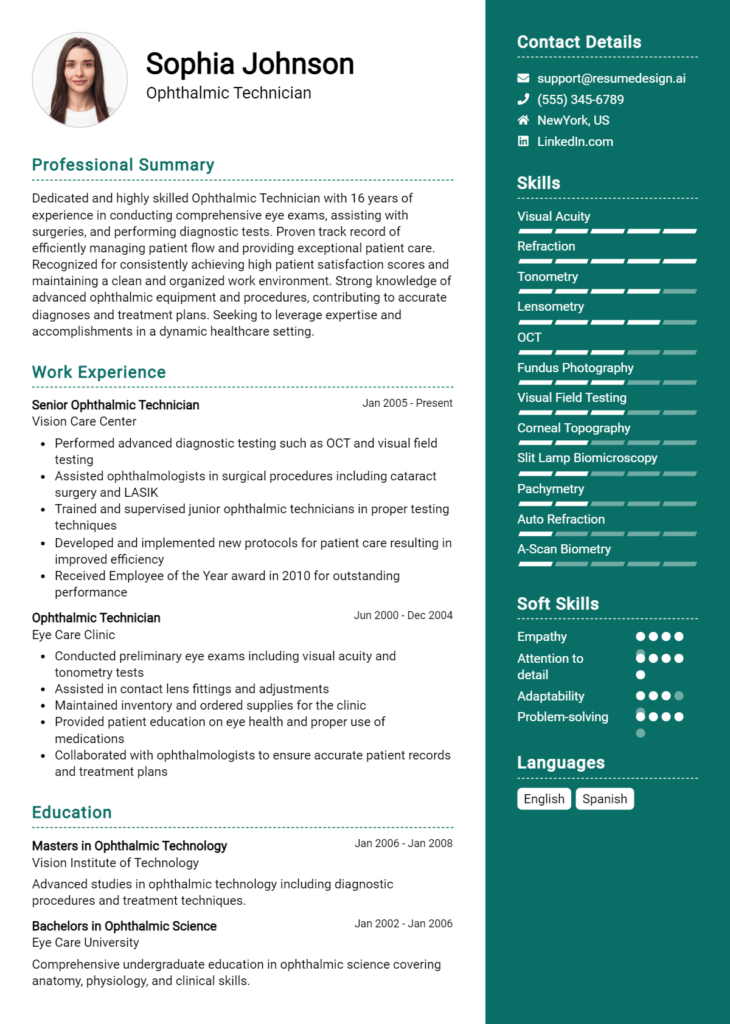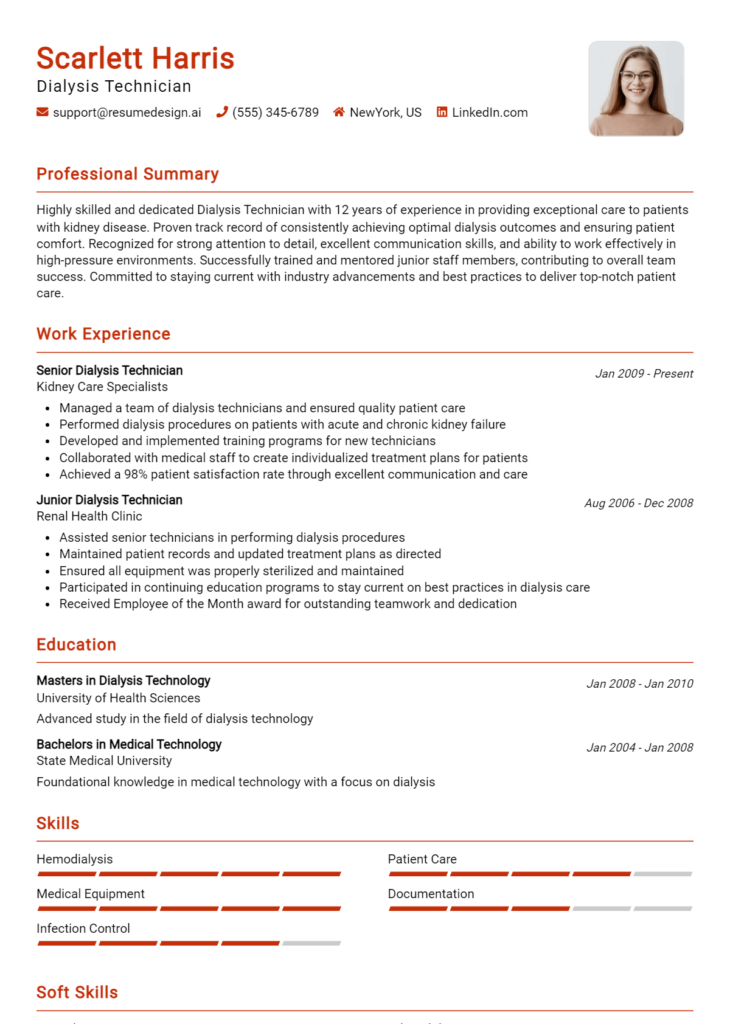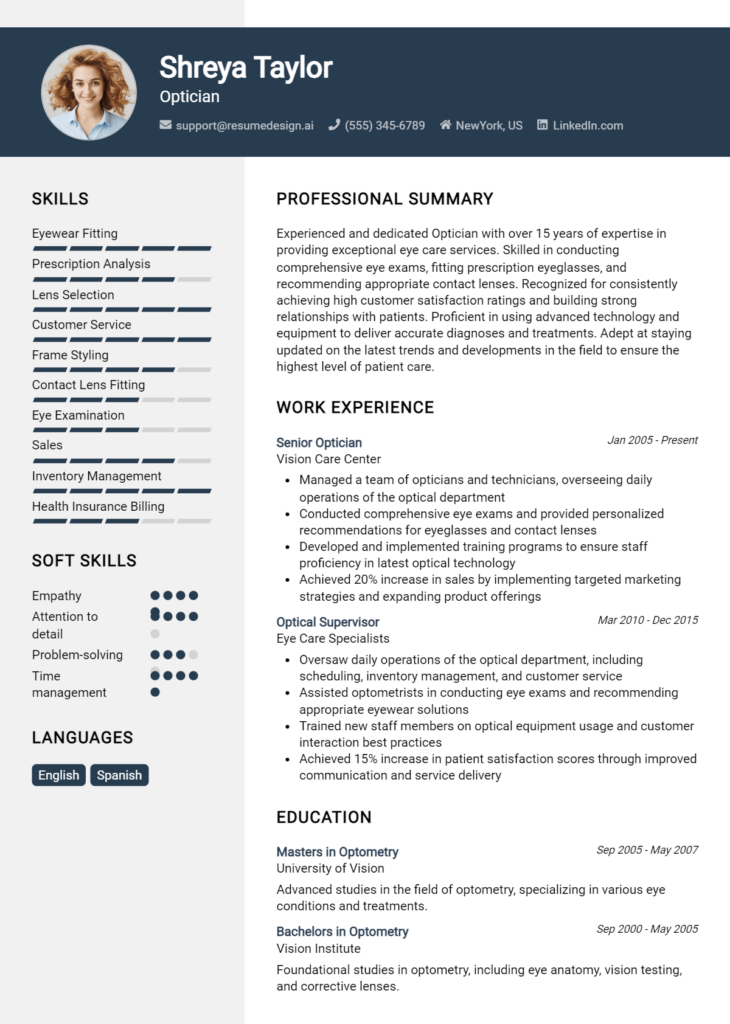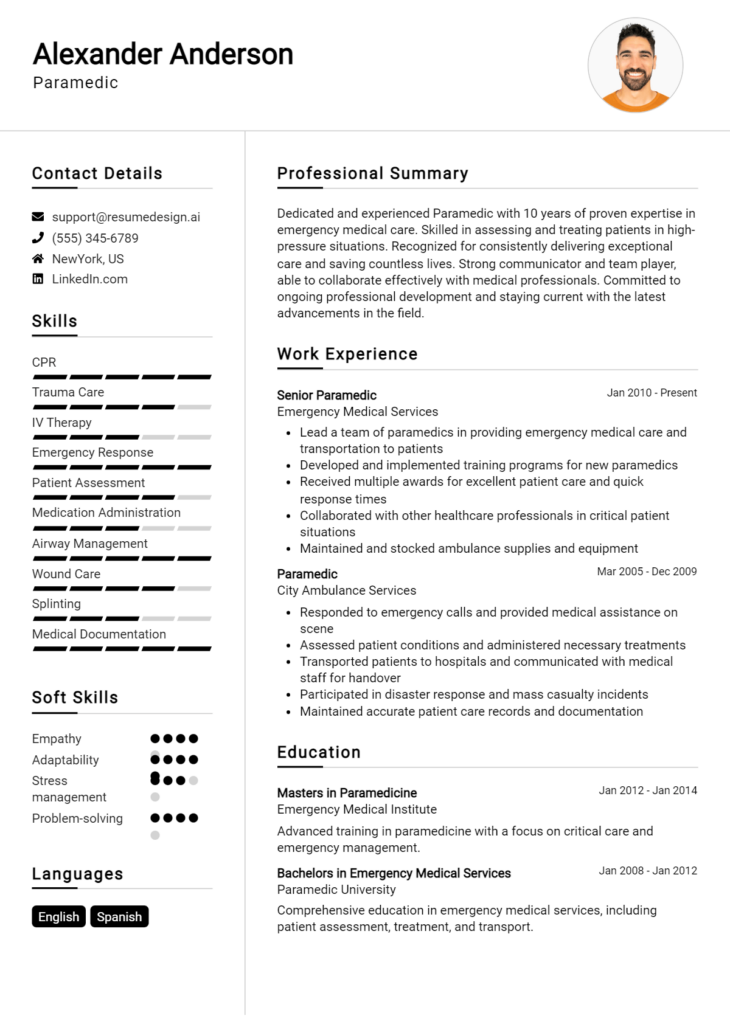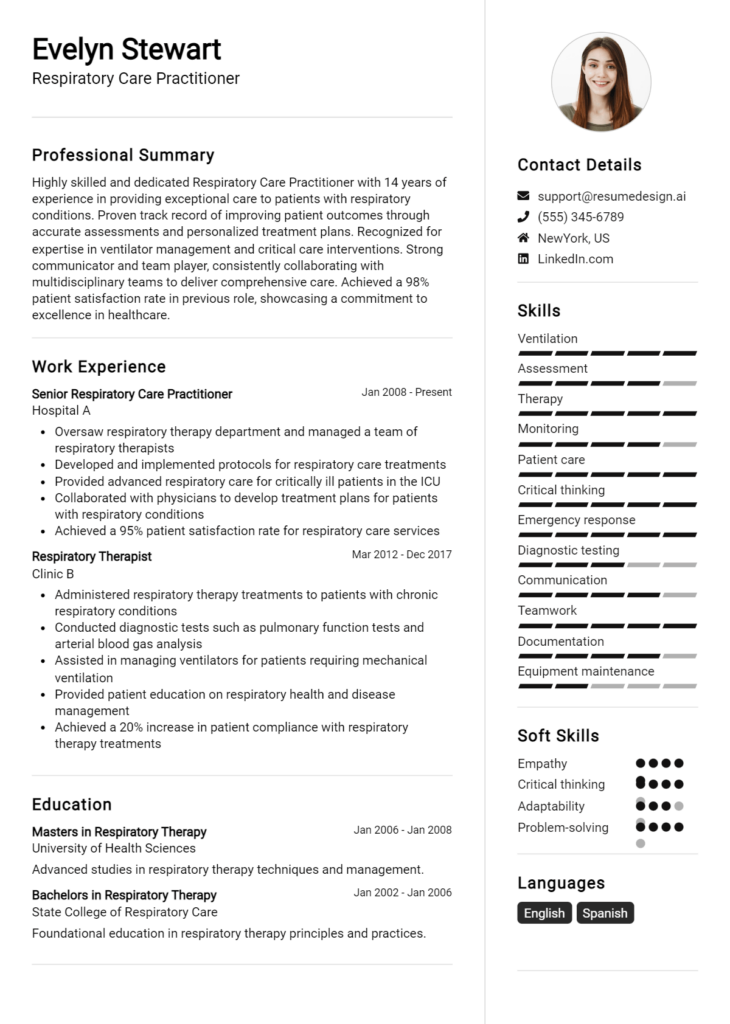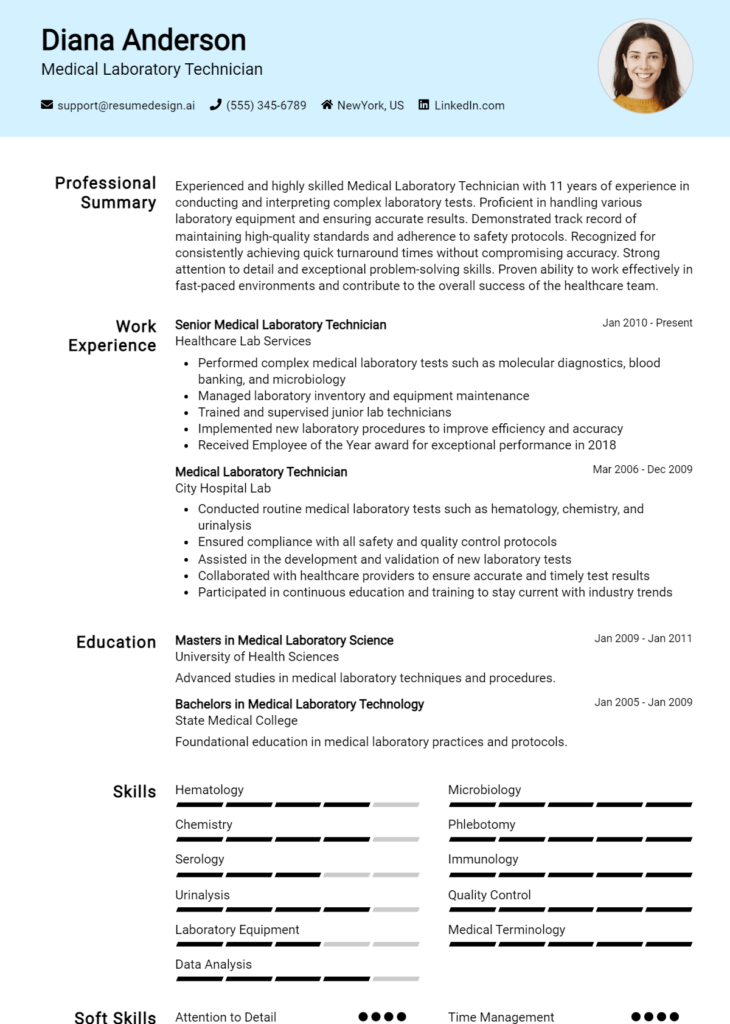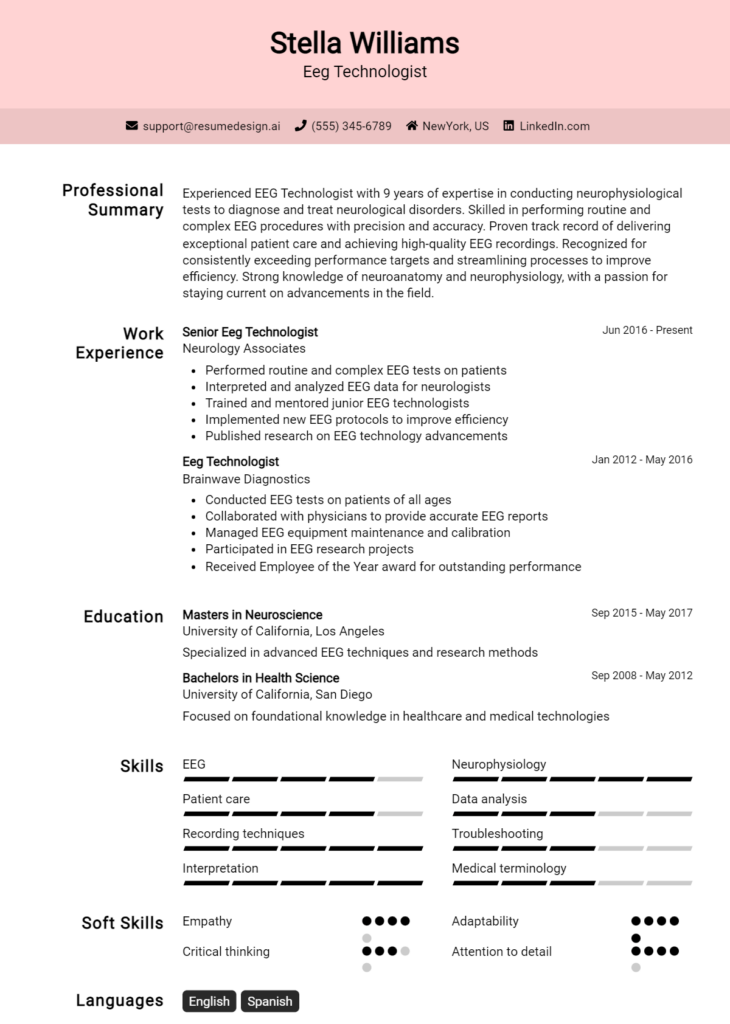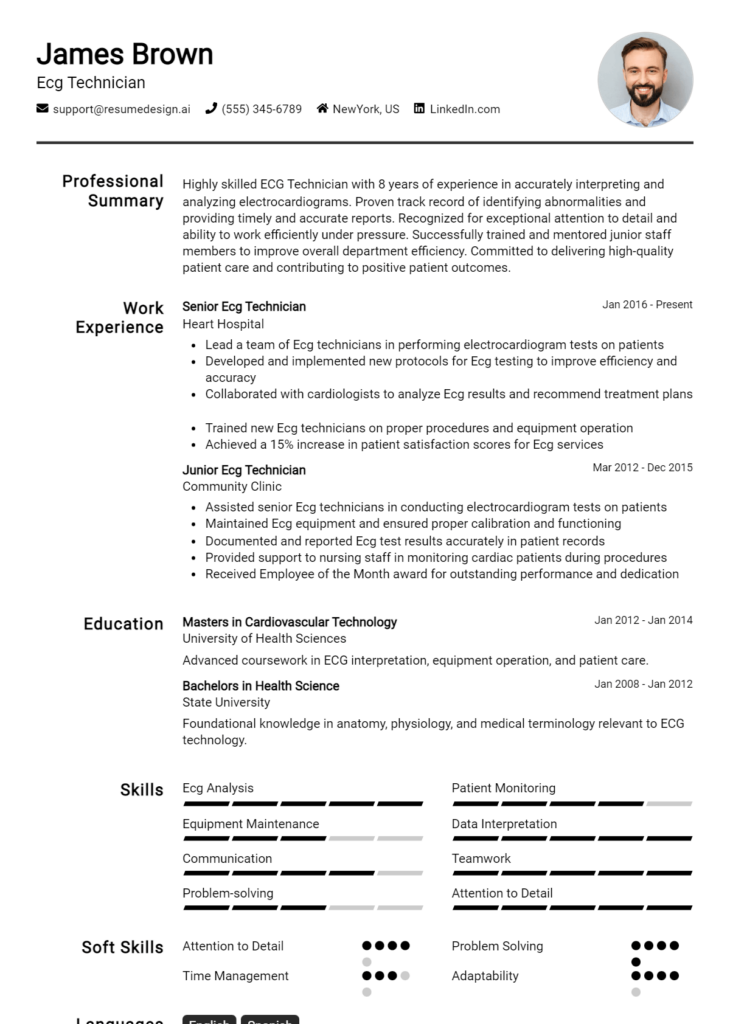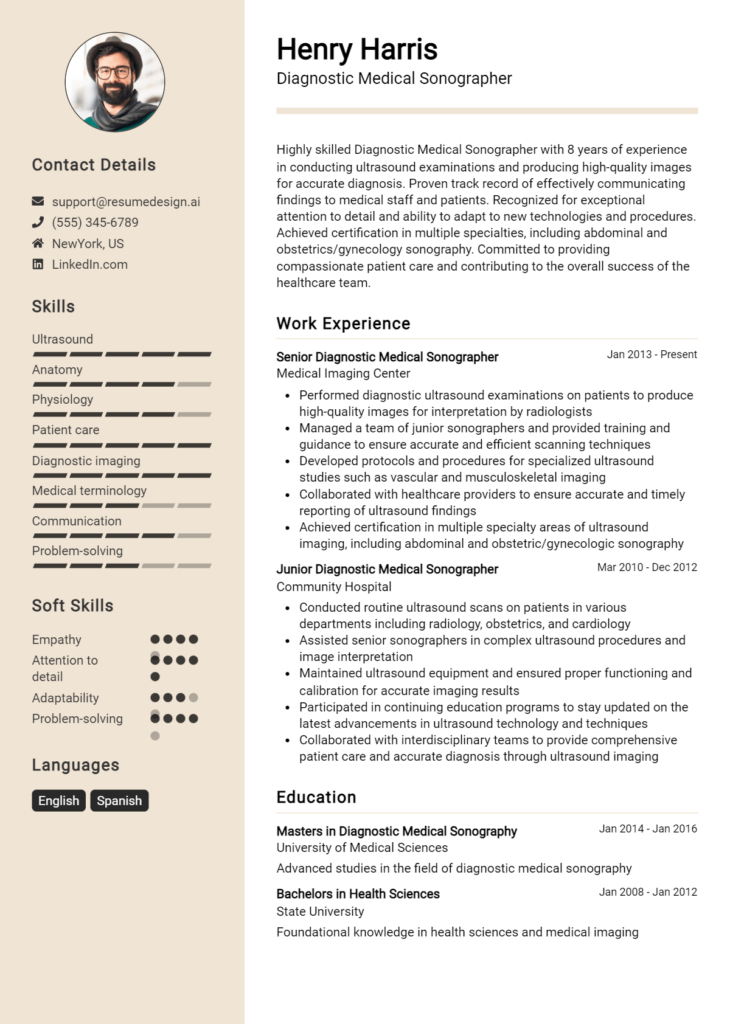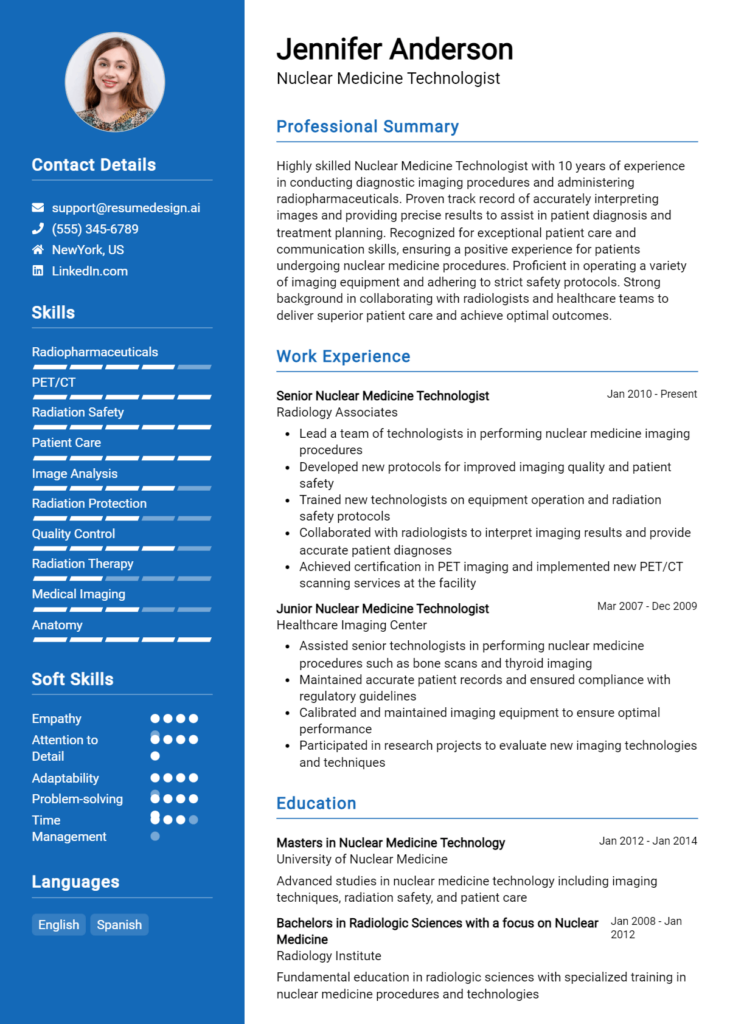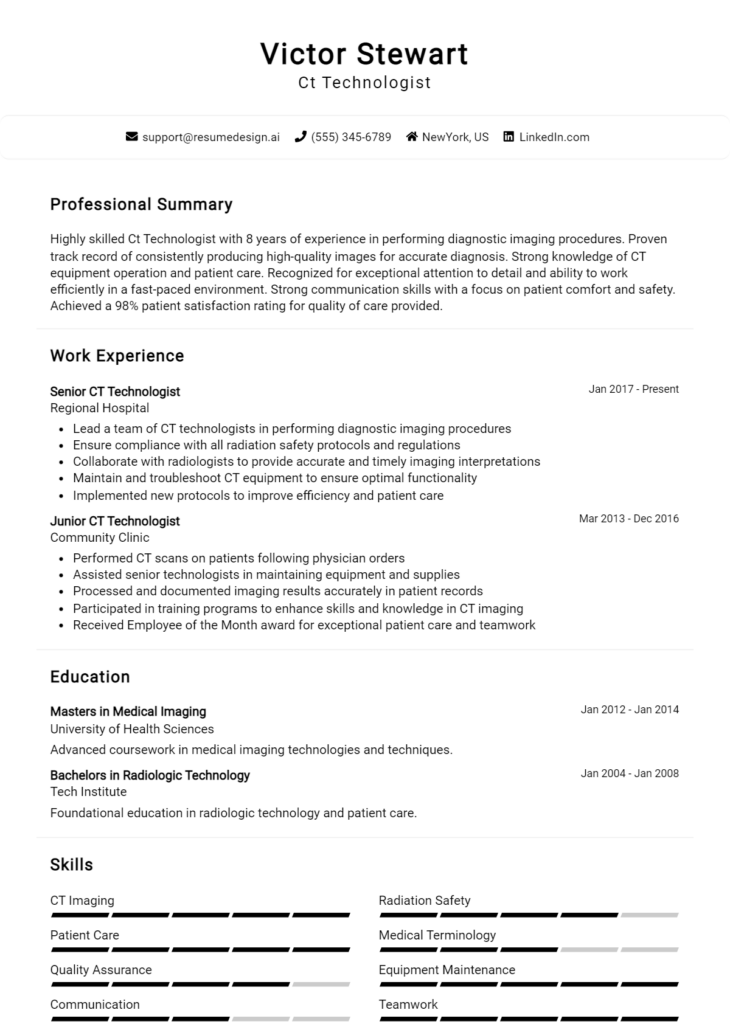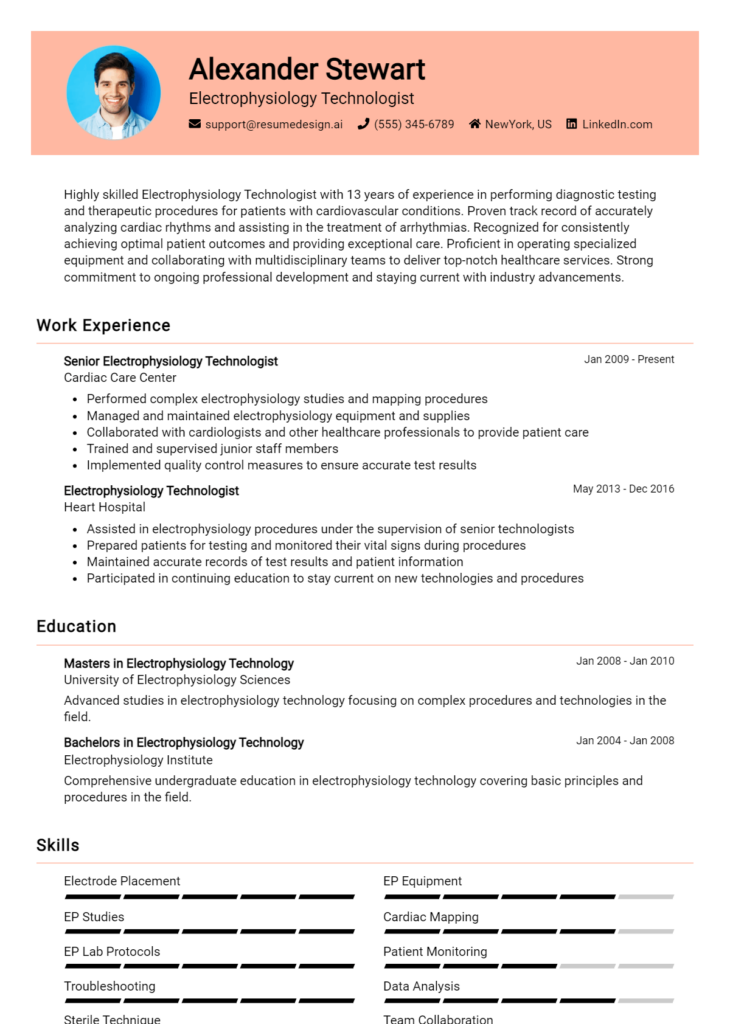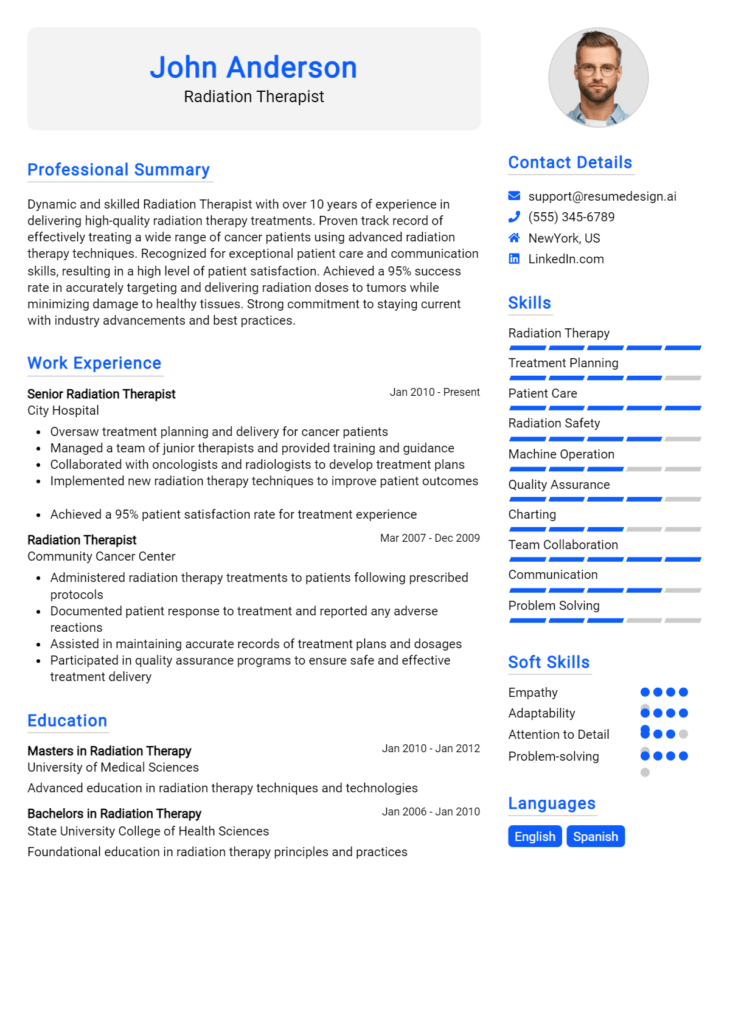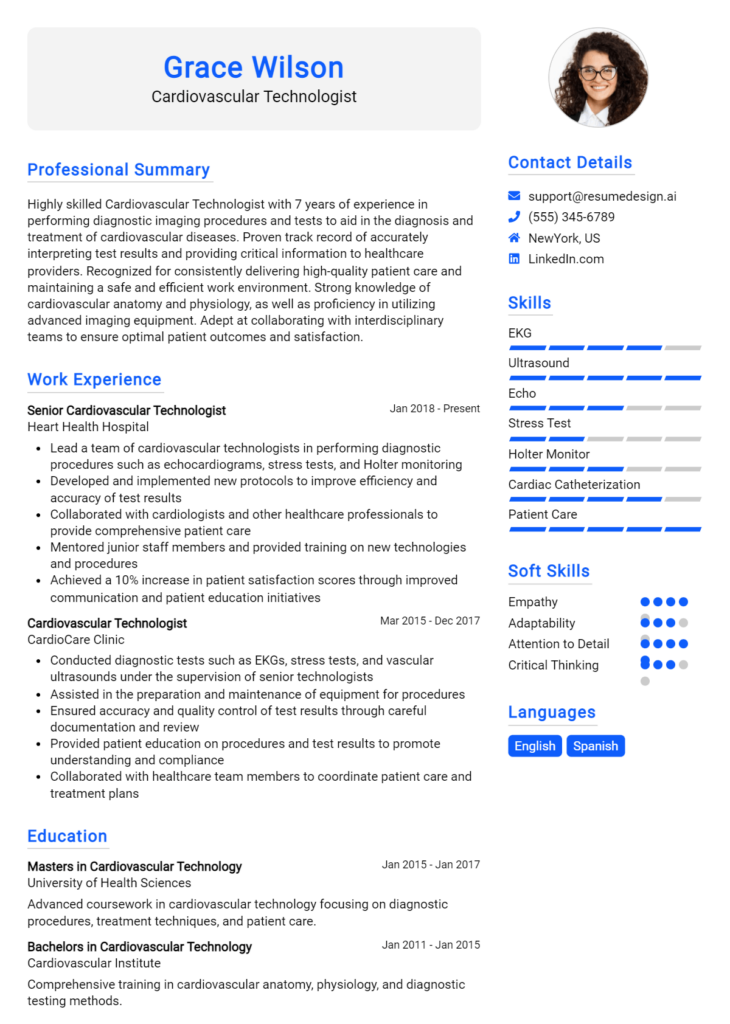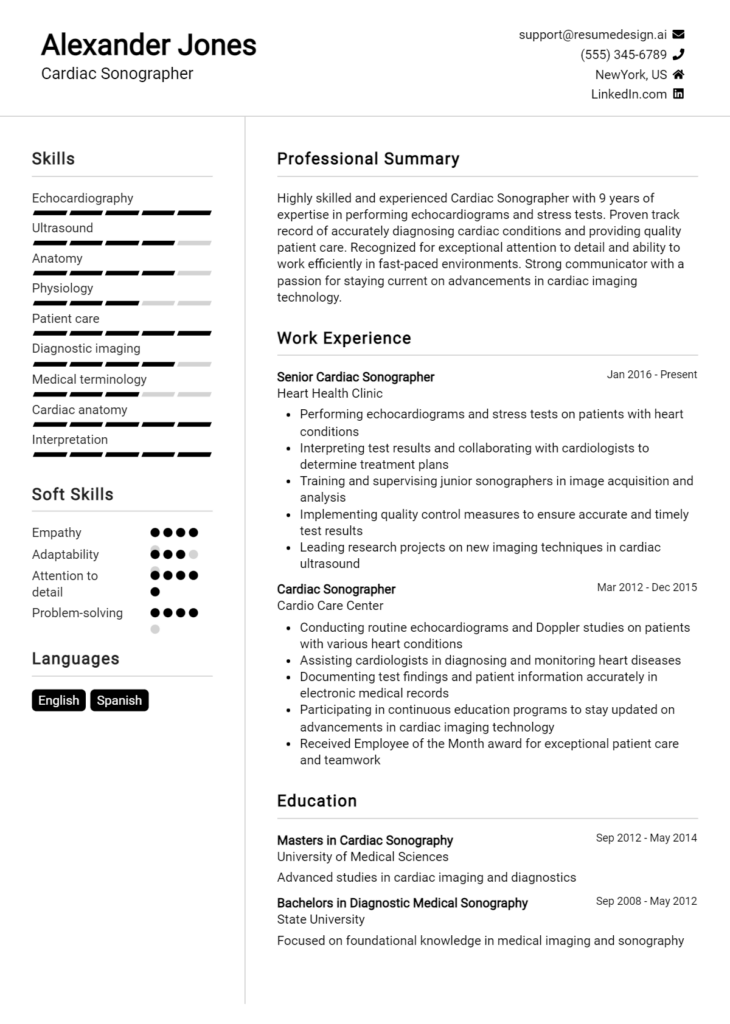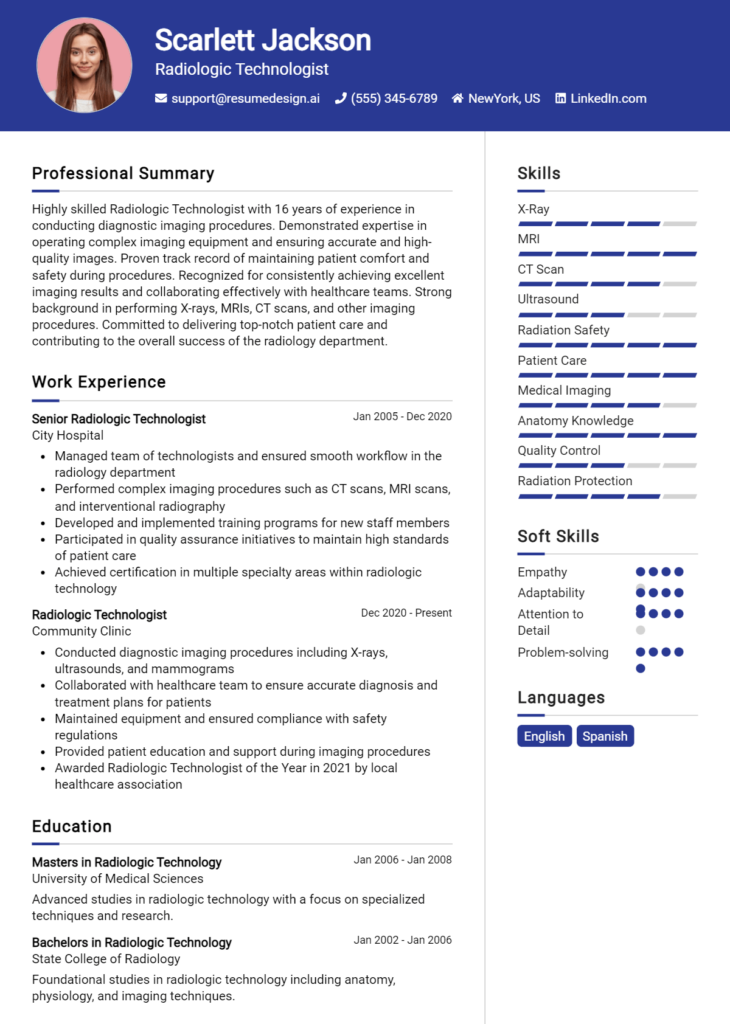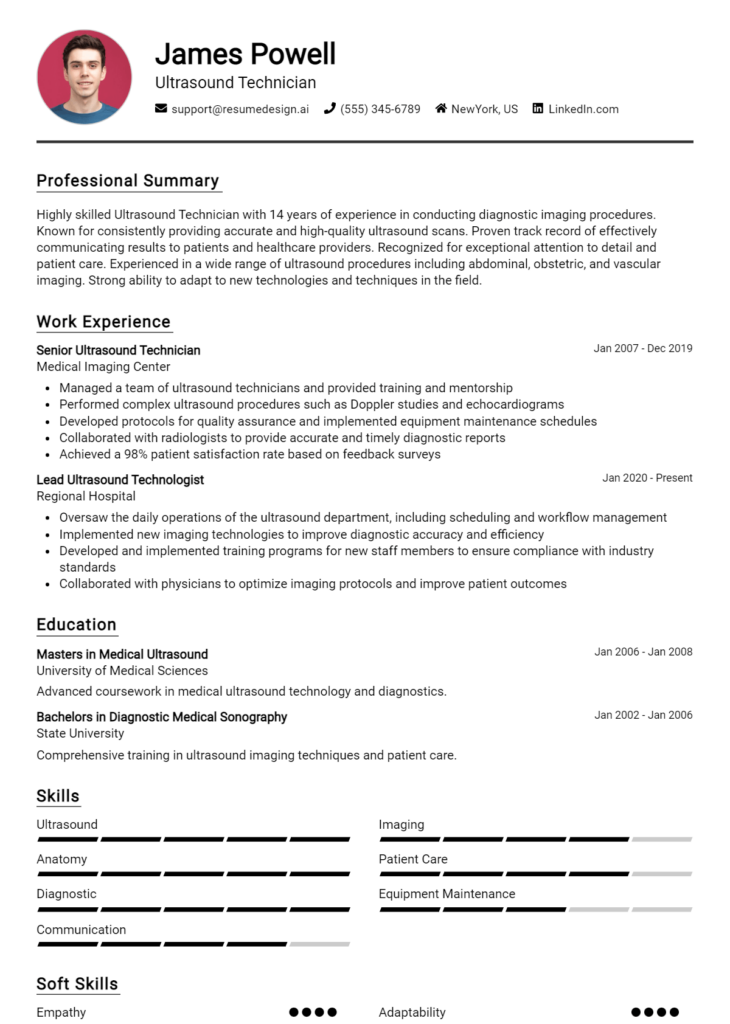Phlebotomist Core Responsibilities
A Phlebotomist plays a crucial role in the healthcare system by collecting blood samples for diagnostic tests, which helps diagnose and monitor various medical conditions. Key responsibilities include preparing patients, performing venipunctures, and ensuring proper specimen handling. Essential skills encompass technical proficiency, operational awareness, and strong problem-solving abilities, enabling effective collaboration between departments like nursing and laboratory services. A well-structured resume highlighting these qualifications can significantly enhance job prospects, contributing to the organization's overall goals.
Common Responsibilities Listed on Phlebotomist Resume
- Conducting patient interviews to obtain medical history and explain procedures
- Preparing and sterilizing equipment and supplies for blood collection
- Performing venipunctures and capillary punctures
- Labeling and processing blood samples according to protocols
- Maintaining accurate records of patient information and procedures
- Ensuring compliance with safety and infection control standards
- Assisting in the training of new phlebotomists and interns
- Handling patient inquiries and addressing concerns with empathy
- Coordinating with laboratory staff to ensure timely analysis of specimens
- Monitoring and maintaining inventory of phlebotomy supplies
- Participating in quality assurance and performance improvement initiatives
- Staying updated on advancements in phlebotomy techniques and technologies
High-Level Resume Tips for Phlebotomist Professionals
In the competitive field of phlebotomy, a well-crafted resume serves as your first opportunity to make a lasting impression on potential employers. It is essential that your resume not only showcases your technical skills and experience but also highlights your unique achievements in the field. A strong resume can set you apart from other candidates, demonstrating your capability and dedication to patient care and laboratory excellence. This guide will provide practical and actionable resume tips specifically tailored for phlebotomist professionals, helping you to effectively present your qualifications to secure that coveted position.
Top Resume Tips for Phlebotomist Professionals
- Tailor your resume to match the specific job description, incorporating relevant keywords and phrases.
- Highlight your phlebotomy certifications, such as ASCP or NHA, prominently at the top of your resume.
- Showcase your hands-on experience with blood collection techniques and patient interaction.
- Quantify your achievements by including statistics, such as the number of successful blood draws or efficiency improvements.
- Emphasize your knowledge of safety protocols and infection control measures to demonstrate your commitment to patient safety.
- Include any experience with electronic health records (EHR) systems and lab equipment to showcase your technical skills.
- Highlight soft skills, such as communication and empathy, which are crucial for working with patients.
- Utilize a clean, professional format that is easy to read and visually appealing.
- Incorporate volunteer work or internships related to healthcare to illustrate your passion and dedication to the field.
- Keep your resume concise, ideally one page, focusing on the most relevant information for the position you are applying for.
By implementing these tailored tips, you can significantly enhance your chances of landing a job in the phlebotomy field. A polished and targeted resume will not only highlight your skills and accomplishments but also position you as a strong candidate in the eyes of potential employers, paving the way for a successful career in this vital healthcare role.
Why Resume Headlines & Titles are Important for Phlebotomist
In the competitive field of healthcare, a Phlebotomist plays a vital role in patient care by collecting blood samples for tests, transfusions, and research. When applying for a position, a well-crafted resume headline or title is essential as it serves as the first impression for hiring managers. A strong headline can immediately grab attention and succinctly summarize a candidate's key qualifications in one impactful phrase. This concise and relevant statement should directly relate to the job being applied for, making it easier for recruiters to quickly assess a candidate's suitability for the position.
Best Practices for Crafting Resume Headlines for Phlebotomist
- Keep it concise and to the point, ideally under 10 words.
- Use specific job titles that reflect the role you are applying for.
- Highlight relevant skills or certifications, such as "Certified Phlebotomist."
- Incorporate quantifiable achievements, like "5+ Years of Experience."
- Avoid generic terms; tailor the headline to the specific job description.
- Use action verbs to convey a sense of proactivity and professionalism.
- Make sure the headline aligns with the rest of your resume content.
- Consider including a unique selling proposition that sets you apart from others.
Example Resume Headlines for Phlebotomist
Strong Resume Headlines
Dedicated Certified Phlebotomist with 5+ Years of Experience
Skilled in Pediatric Phlebotomy Techniques and Patient Care
Proficient Phlebotomist with a Track Record of 98% Sample Accuracy
Compassionate Phlebotomist Committed to Patient Comfort and Safety
Weak Resume Headlines
Phlebotomist Looking for a Job
Experienced Healthcare Worker
Seeking Opportunities in Blood Collection
The strong headlines are effective because they immediately communicate the candidate's qualifications, experience, and unique strengths in a clear and concise manner. On the other hand, the weak headlines fail to impress due to their vagueness and lack of specificity, making it difficult for hiring managers to gauge the candidate's suitability for the role. A compelling headline not only captures attention but also sets the tone for the entire resume, encouraging recruiters to read further.
Writing an Exceptional Phlebotomist Resume Summary
A well-crafted resume summary is essential for phlebotomists as it serves as the first impression for hiring managers. This brief yet impactful introduction can quickly capture attention by highlighting key skills, relevant experience, and notable accomplishments that align with the job requirements. A strong resume summary should be concise, tailored to the specific position, and designed to entice the reader to learn more about the candidate's qualifications, making it a crucial component of a successful job application.
Best Practices for Writing a Phlebotomist Resume Summary
- Start with a strong opening statement that captures your professional identity.
- Quantify your achievements, such as the number of successful blood draws or patient satisfaction scores.
- Highlight specific skills relevant to phlebotomy, such as proficiency in venipuncture or knowledge of safety protocols.
- Tailor the summary to match the job description, using keywords that the employer emphasizes.
- Keep it concise, ideally between 3-5 sentences, to maintain the reader's attention.
- Showcase relevant certifications or training that add credibility to your skills.
- Use action verbs to convey a proactive and results-oriented approach.
- Focus on your ability to work in a team and communicate effectively with patients and healthcare staff.
Example Phlebotomist Resume Summaries
Strong Resume Summaries
Dedicated phlebotomist with over 5 years of experience in high-volume clinical settings, successfully performing an average of 50 venipunctures daily while maintaining a 98% patient satisfaction rate. Proficient in both venipuncture and capillary puncture techniques, with a strong commitment to patient safety and comfort.
Compassionate phlebotomist with a proven track record of conducting over 10,000 blood draws with a 99% accuracy rate. Highly skilled in managing patient anxiety and providing exceptional care, contributing to a 30% increase in patient retention at my previous facility.
Certified phlebotomist specializing in pediatric and geriatric populations, with 4 years of experience in drawing blood and handling specimens. Recognized for excellence in patient interaction and reducing draw-related complications by 15% through effective communication and technique.
Weak Resume Summaries
Phlebotomist with experience in drawing blood and working with patients. I am looking for a new opportunity to utilize my skills.
Experienced healthcare professional seeking a position as a phlebotomist. I have worked in various medical settings and am skilled in patient care.
The strong resume summaries are considered effective because they provide specific details about the candidate's experience, quantify their achievements, and directly relate to the responsibilities of a phlebotomist. In contrast, the weak summaries are vague and lack quantifiable outcomes, making them less compelling and memorable to hiring managers. They fail to demonstrate the candidate's unique qualifications or the value they can bring to the role.
Work Experience Section for Phlebotomist Resume
The work experience section of a Phlebotomist resume is crucial for demonstrating the candidate's technical skills and competencies in the field. This section not only showcases the ability to perform blood draws and handle laboratory equipment but also highlights the candidate's capacity to manage teams effectively and deliver high-quality patient care. By quantifying achievements and aligning their experience with industry standards, candidates can present a compelling narrative that emphasizes their dedication to excellence in phlebotomy practice.
Best Practices for Phlebotomist Work Experience
- Detail specific technical skills related to blood collection and handling.
- Quantify achievements, such as the number of successful blood draws or reduction in patient wait times.
- Highlight collaborative experiences with healthcare teams and departments.
- Use action verbs to convey a sense of proactivity and leadership.
- Align experiences with industry standards and regulations to showcase compliance.
- Include training or certifications that demonstrate ongoing professional development.
- Focus on patient interaction and the ability to handle difficult situations gracefully.
- Highlight any contributions to improving processes or protocols in the workplace.
Example Work Experiences for Phlebotomist
Strong Experiences
- Performed over 1,200 blood draws with a 98% success rate, significantly reducing patient discomfort and anxiety.
- Led a team of 5 phlebotomists in implementing a new patient tracking system that decreased patient wait times by 30%.
- Collaborated with medical staff to develop training materials for new phlebotomists, enhancing onboarding efficiency by 25%.
- Received a patient satisfaction score of 4.8/5 through consistent high-quality service and effective communication skills.
Weak Experiences
- Responsible for drawing blood and assisting other staff.
- Helped in the lab and completed various tasks as needed.
- Worked with patients on several occasions.
- Participated in team meetings and discussions about blood collection.
The examples classified as strong exhibit specific achievements and measurable outcomes that demonstrate the candidate's technical expertise and ability to collaborate effectively within a healthcare setting. In contrast, the weak experiences are vague and lack quantifiable results, making it difficult for potential employers to gauge the candidate's actual contributions and competencies in the phlebotomy field.
Education and Certifications Section for Phlebotomist Resume
The education and certifications section of a Phlebotomist resume is crucial for showcasing a candidate's academic background and commitment to the field. This section not only highlights relevant degrees and industry-recognized certifications but also indicates the candidate's dedication to continuous learning and professional development. By providing details on relevant coursework, specialized training, and certifications, candidates can significantly enhance their credibility and demonstrate their alignment with the specific requirements of the job role. Employers often look for this information as it reflects the candidate's preparedness and competence in performing essential phlebotomy tasks.
Best Practices for Phlebotomist Education and Certifications
- Include only relevant degrees and certifications that pertain to phlebotomy.
- Highlight industry-recognized certifications such as the Certified Phlebotomy Technician (CPT) or Registered Phlebotomy Technician (RPT).
- Detail any specialized training or workshops relevant to blood collection and handling.
- List relevant coursework that demonstrates knowledge of anatomy, physiology, and laboratory procedures.
- Present certifications in reverse chronological order, starting with the most recent.
- Ensure all listed credentials are up-to-date and reflect ongoing education efforts.
- Use clear and professional formatting for easy readability.
- Include any affiliations with professional organizations in the healthcare sector.
Example Education and Certifications for Phlebotomist
Strong Examples
- Associate Degree in Clinical Laboratory Technology, XYZ Community College, 2021
- Certified Phlebotomy Technician (CPT), National Healthcareer Association, 2022
- Blood Collection Techniques Certification, ABC Training Institute, 2023
- Coursework in Human Anatomy and Physiology, XYZ University, Completed 2020
Weak Examples
- Bachelor’s Degree in Business Administration, ABC University, 2018
- Certification in First Aid, Red Cross, 2019 (not specific to phlebotomy)
- High School Diploma, 2017 (without further relevant education or training)
- Outdated certification in Phlebotomy, expired 2021
The strong examples are considered effective because they directly relate to the qualifications and skills required for a Phlebotomist role, showcasing relevant education and up-to-date certifications. In contrast, the weak examples fail to align with the job requirements, either by being unrelated to phlebotomy or by indicating outdated or irrelevant qualifications. This distinction is vital for employers seeking qualified candidates who are prepared for the responsibilities of the position.
Top Skills & Keywords for Phlebotomist Resume
As a phlebotomist, the ability to effectively communicate and interact with patients is just as vital as technical proficiency in blood collection. A well-crafted resume that highlights the right skills can significantly improve your chances of landing a job in this competitive field. Employers seek candidates who not only have the necessary hard skills but also demonstrate strong interpersonal abilities. By focusing on these essential skills, you can showcase your qualifications and make a lasting impression. For more insights on how to enhance your resume, explore our resources on skills and work experience.
Top Hard & Soft Skills for Phlebotomist
Soft Skills
- Empathy
- Communication
- Attention to Detail
- Patient Care
- Teamwork
- Time Management
- Adaptability
- Problem-Solving
- Stress Management
- Professionalism
Hard Skills
- Venipuncture Techniques
- Blood Collection Procedures
- Knowledge of Medical Terminology
- Infection Control Practices
- Lab Equipment Proficiency
- Record Keeping and Documentation
- Understanding of Hematology
- Familiarity with Safety Protocols
- Quality Assurance Practices
- CPR and First Aid Certification
Stand Out with a Winning Phlebotomist Cover Letter
I am writing to express my interest in the Phlebotomist position at [Company Name], as advertised on [where you found the job listing]. With a solid foundation in phlebotomy techniques and a passion for patient care, I am excited about the opportunity to contribute my skills to your esteemed healthcare team. My extensive training, combined with my ability to communicate effectively with patients, positions me as a strong candidate for this role.
During my training at [Your School/Training Facility], I gained hands-on experience in various blood collection techniques, including venipuncture and capillary draws. I am adept at ensuring patient comfort and safety throughout the process, while also maintaining a sterile environment. My certification from [Certifying Body] and my background in [Related Field] have equipped me with the knowledge and skills necessary to perform high-quality blood collection and documentation. I believe that my attention to detail and commitment to following protocols will help maintain the high standards of [Company Name].
Moreover, I pride myself on my ability to build rapport with patients from diverse backgrounds. I understand that many individuals experience anxiety during blood draws, and I strive to create a welcoming atmosphere that alleviates their fears. My previous experience volunteering at [Relevant Volunteer Experience] has strengthened my interpersonal skills and taught me the importance of compassion in healthcare settings. I am confident that my empathetic approach will positively impact the patient experience at [Company Name].
I am eager to bring my expertise in phlebotomy to your team and contribute to the exceptional care provided at [Company Name]. Thank you for considering my application. I look forward to the opportunity to discuss how my background, skills, and enthusiasm align with the needs of your organization. Please feel free to contact me at [Your Phone Number] or [Your Email] to schedule a conversation.
Common Mistakes to Avoid in a Phlebotomist Resume
When crafting a resume as a phlebotomist, it's crucial to present your qualifications and experiences in a clear and professional manner. However, many candidates make common mistakes that can hinder their chances of landing an interview. Avoiding these pitfalls can significantly enhance the effectiveness of your resume and help you stand out in a competitive job market.
Using an Unprofessional Email Address: An email address that is overly casual or inappropriate can create a negative first impression. Always use a professional-sounding email that includes your name.
Neglecting Keywords: Failing to include keywords from the job description can lead to your resume being overlooked by applicant tracking systems (ATS). Tailor your resume to reflect the specific skills and experiences mentioned in the job posting.
Being Too Vague: Simply listing duties without providing context or achievements can make your resume forgettable. Use specific examples of your work that demonstrate your skills and successes.
Including Irrelevant Information: Adding unrelated work experience or hobbies can clutter your resume. Focus on experiences that are directly relevant to phlebotomy and healthcare.
Poor Formatting: A cluttered or inconsistent format can make your resume difficult to read. Use clear headings, bullet points, and a consistent font to improve readability.
Overloading with Jargon: Using excessive medical jargon might confuse hiring managers who may not be familiar with specific terms. While some terminology is necessary, clarity should always be prioritized.
Ignoring Proofreading: Spelling and grammatical errors reflect poorly on your attention to detail. Always proofread your resume multiple times and consider asking someone else to review it as well.
Listing Responsibilities Instead of Achievements: Employers are interested in what you achieved in your previous roles, not just what your responsibilities were. Highlight your accomplishments, such as successful blood draws or improvements in patient care.
Conclusion
As a phlebotomist, your role is crucial in the healthcare system, requiring a unique blend of technical skill, attention to detail, and excellent interpersonal communication. Key responsibilities include drawing blood for tests, ensuring patient comfort, maintaining sterile techniques, and accurately labeling samples. The ability to interact with patients compassionately, especially in stressful situations, is vital for building trust and ensuring a smooth process.
To excel in this field, it’s essential to highlight your relevant certifications, experience, and skills in your resume. Ensure that your qualifications stand out by utilizing modern tools that can enhance your job application.
Now is the perfect time to review your Phlebotomist resume. Make sure it reflects your skills and experiences effectively. Utilize our resume templates for a professional layout, or try our resume builder to create a custom resume that stands out. Looking for inspiration? Check out our resume examples to see how others have successfully crafted their applications. Don’t forget to pair your resume with a compelling introduction using our cover letter templates to leave a lasting impression. Take action today and enhance your chances of landing that vital position in the healthcare field!

